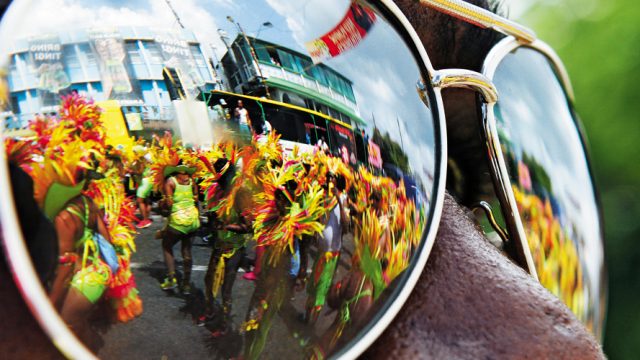The locals proudly call Trinidad and Tobago’s annual carnival, “The Greatest Show on Earth.” It is certainly one of the world’s best street parties. Other islands in the Caribbean have tried to replicate it; the West Indian diaspora has its own version in cities like Toronto, New York, Miami and most famously on Portobello Road in London’s Notting Hill. None of them, however, come close to matching the exuberance and creativity of the original on the streets of Port of Spain, Trinidad and Tobago’s capital.
This year’s carnival is on February 27 and 28, a final binge just before Ash Wednesday—the day when Lent begins, Christianity’s season of fasting and prayer. It attracts thousands of visitors from all over the world and is the busiest time of the year for hotels. If you wish to stay anywhere near the city, you must book your accommodation well in advance. Rooms in private houses are also available.
Leave your saris and inhibitions at home. Once you are there, go native, let your hair down and enjoy the carnival’s explosion of colour, music and, if you are so inclined, its debauchery. The festivities are fuelled by beer and rum. You can drink coconut water too if you wish, but you will find few to keep you company.
The proceedings start on Monday around four in the morning with the party of J’Ouvert (from the French jour overt for ‘day break’). The revellers smear themselves with cocoa, grease, and even motor oil. They throw mud, powder and water at each other. This is not yet time for wearing of costumes; you are advised to come in old clothes that you don’t mind getting dirty. It is a bit like our Holi, with rum replacing bhaang to get you in the mood. When dawn breaks, everyone goes home for some shut-eye. They return around 11am when the real action picks up.
They parade in flamboyant costumes, many of them decorated with feathers, beads and sequins. The crowd is whipped into frenzy by live calypso music blasting from mammoth speakers on top of trucks. Most of the participants follow a specific route where judges at various posts decide on the prize for the best steel band of the year. You will find steel bands now all over the Caribbean but they originated here in Trinidad at the end of World War II, when the locals fashioned musical instruments from empty oil drums left behind by the American soldiers. At the judging points, the parade slows down and musicians get the chance to prove themselves deserving of the prize.
You will find food stalls selling local cuisine, which has many influences, from French to Spanish and even Indian. Around 40 per cent of Trinidad’s population are descendants of indentured labourers from India who arrived here more than a century and a half ago to work on the sugar plantations. The goat curry I have eaten in Port of Spain is better than any I have tasted anywhere, including in our country.
At midnight on Tuesday, February 28, the carnival will officially end and the countdown for next year’s festivities will begin. Trinidad and Tobago takes its carnival very seriously. It dates back to the 18th century with the influx of French Catholic plantation owners who staged elaborate masquerade balls as a farewell to the pleasures of flesh before the start of Lent season. Soon, the slaves of these planters began having their own mask parties around fires started from sugarcane leaves left after the gruelling harvest.
After the abolition of slavery in 1838, the festival became a symbol of freedom and defiance. The British colonial government tried to ban it but failed to stamp it out and it became the black Trinidadian’s hallmark of identity. Today, it is very much part of the country’s boisterous culture, celebrated by the young and the old of all races.
The two islands of Trinidad and Tobago sit just off the coast of the South American continent. On a clear day, you can see Venezuela from one of the northern shores. It’s a long way to go but there is more to the place than just the carnival. The country has spectacular rain forests, waterfalls and palm-fringed white sand beaches where you can swim or lie in the sun. February is a great time to visit. The climate is at its most pleasant; it is not the rainy season and the tropical trees are in full bloom.




